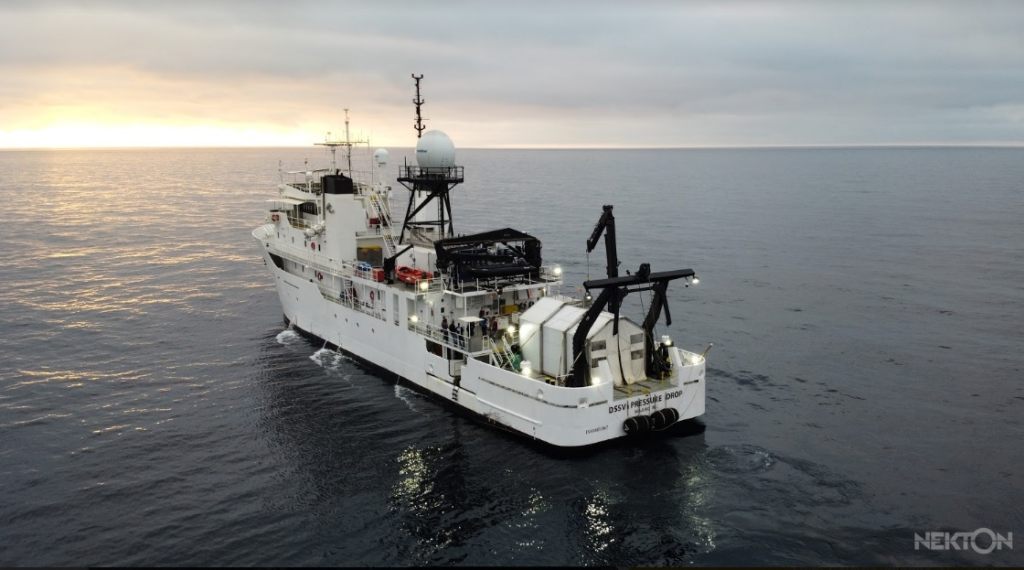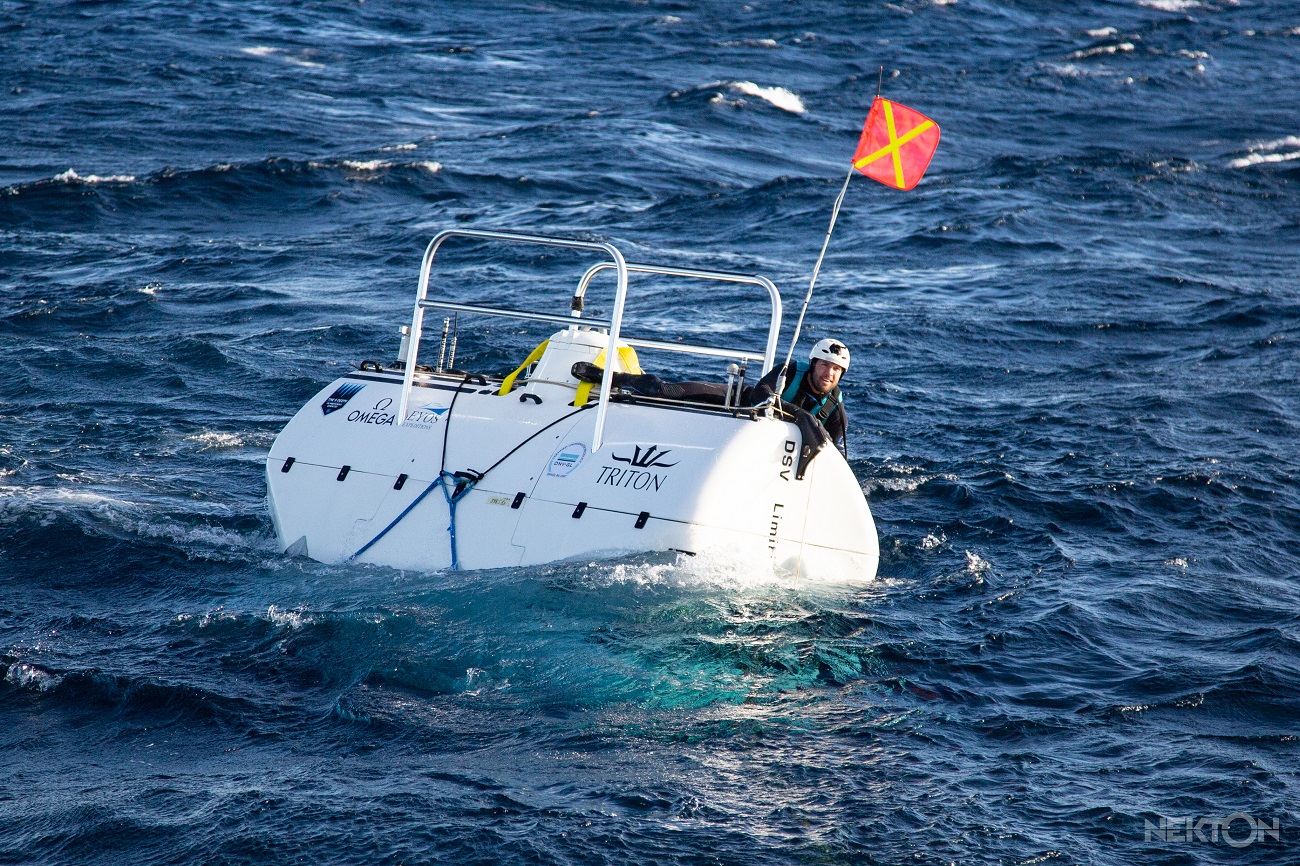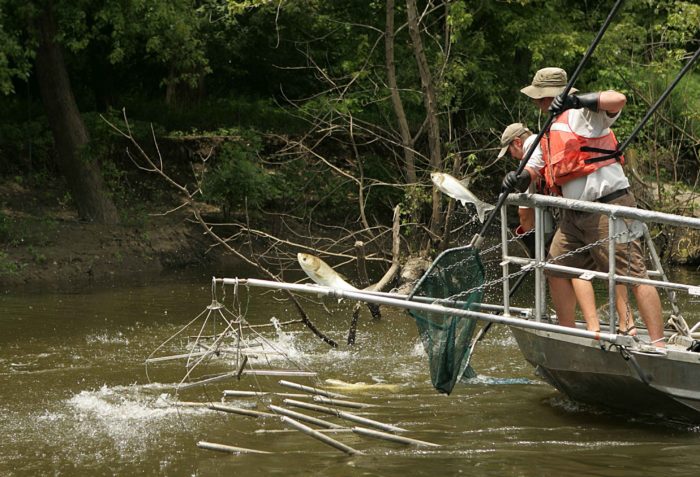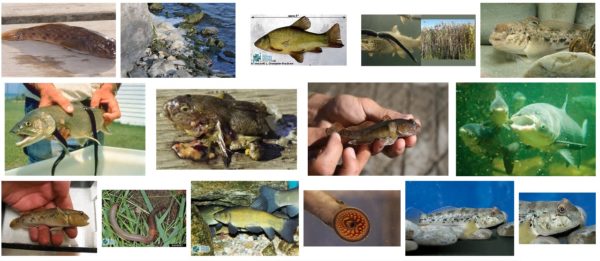A deep-sea scientific mission to uncharted depths in the Maldives and Seychelles will gather valuable data to support the Commonwealth Blue Charter on ocean action and train local scientists.
The newest Commonwealth member country, Maldives, has joined Seychelles to launch a major joint scientific expedition to investigate unexplored depths of the Indian Ocean.

The ground-breaking multidisciplinary research mission, known as ‘First Descent: Midnight Zone’, was officially launched at the Commonwealth headquarters at Marlborough House.
Led by the UK research institute Nekton, the goal is to boost the sustainable governance of Seychelles and Maldivian waters, including the protection of 629,000 km2 of ocean.
It supports the Commonwealth Blue Charter – a shared commitment by member countries to protect the ocean from the effects of climate change, pollution and overfishing.

Minister for Fisheries, Marine Resources and Agriculture of the Maldives, Zaha Waheed, said: “It is vital to comprehensively understand what lies beneath our waters in order for us to be informed enough to take necessary actions towards a healthy and prosperous ocean.
“This mission will, for the first time, show a glimpse of what the deep sea features and the biodiversity it holds. It will also contribute to the wider goal of marine spatial planning and ocean governance.”
A 50-person crew will set sail on 16 March, using the world’s most advanced deep diving submersible, equipped with a suite of research tools including sensor and mapping technology.
The data they collect will help countries define conservation and management priorities and map out marine protected areas. It will also help measure the impact of climate change and human activity in the area.

Commonwealth Secretary-General Patricia Scotland said: “We cannot protect what we don’t know and we cannot govern what we don’t understand. With 95 per cent of the ocean still unexplored by humans, we are only just beginning to grasp its profound influence on life, including its effect on global climate and ecosystems.
“It is pleasing to see the commitments of our Commonwealth Blue Charter leading to such far-reaching and innovative science-backed ocean action in, with and for our member countries.”
The expedition will focus on undersea mountains or ‘seamounts’ in the Midnight Zone – depths from 1,000 to 4,000 metres, where biodiversity peaks. This zone holds critical indicators to measure the impact of the climate crisis, fisheries management, heat absorption, acidification, ocean carbon cycle, and plastic, agricultural and industrial pollution.

The damage or overexploitation of seamounts can have widespread consequences on ocean health, food security, and other benefits the ocean provides, such as the discovery of new medicines.
Principal Secretary at the Ministry of Environment, Energy and Climate Change of Seychelles, Alain Decormamond said: “Seamounts form some of the most fascinating and richest locations in our waters and beyond in the wider Indian Ocean. We are therefore looking forward to exploring even deeper depths of our ocean to have a better understanding of natural characteristics and richness of these locations.”
The mission’s principal scientist Lucy Woodall from the University of Oxford added: “We find the greatest biomass in the upper few hundred metres of the ocean, but the peak of biodiversity is in the greater depths, in the Midnight Zone, from 1,000 to 4,000 metres. That said, less than 300 of 170,000 known major seamounts found in this zone have been researched to date, and they remain one of the least researched parts of the ocean.”
Nekton is also working with Commonwealth countries to develop the tools, skills, knowledge and networks to sustainably manage the ocean. Seychellois and Maldivian scientists will join the expedition to conduct pioneering research into their national waters. This is supported by training programmes, research grants and fellowships with the University of Oxford.
Seychelles champions the Commonwealth Blue Charter action group on marine protected areas. To date, 13 countries have stepped forward to lead on 10 topics they identified as priorities.
For updates on the expedition, visit nektonmission.org
For more information about the Commonwealth Blue Charter, visit bluecharter.thecommonwealth.org
The Commonwealth Blue Charter
The Commonwealth covers a third of the world’s coastal oceans, 45% of coral reefs and the majority of the world’s big ocean states and territories. Forty-seven out of our 54 countries have a coastline, and three of the remaining landlocked states border great lakes. The Commonwealth Blue Charter is a landmark agreement that engages all 54 Commonwealth countries to commit to actively co-operating to solve ocean-related problems and meet commitments for sustainable ocean development. Visit our website to learn how to join action groups.
Seychelles
The Seychelles Blue Economy Strategic Roadmap and Plan has been developed and implemented by the Government of Seychelles in partnership with the Commonwealth Secretariat. A key component of this, the Seychelles’ Marine Spatial Plan, is being undertaken in partnership with The Nature Conservancy. By March 2020 this will result in the sustainable management of all the Exclusive Economic Zone including 30% within the newly formed Marine Protected Areas (445,000 km2 of 1,336,559 km2). The implementing partner for the expedition is the Ministry for Environment, Energy and Climate Change. Seychelles champions the Commonwealth Blue Charter Action Group on Marine Protected Areas.
Maldives
Maldives Blue Prosperity Programme is being undertaken by the Government of the Maldives in partnership with the Blue Prosperity Coalition and the Waitt Institute. The Programme begins in 2020 with a goal of the sustainable management of the Maldivian Exclusive Economic Zone including a spatial target of at least 20% within newly formed Marine Protected Areas (184,000km2 of 923,000km2). The implementation partner for the expedition is the Ministries of Fisheries, Marine Resources and Agriculture. First Descent: Midnight Zone is the third of four expeditions being undertaken in Maldives in support of Maldives Blue Prosperity. #KanduFalhuDhiraasaa and #NooRaajje
First Descent: Midnight Zone
First Descent is a series of missions undertaken by Nekton in partnership with Governments in the Indian Ocean region. Beginning in Seychelles in 2019, the Mission concludes with a State of the Indian Ocean Summit in October 2022 to deliver scientific consensus on the state of the Indian Ocean and to galvanise 30% protection by 2030. Each mission combines national commitments to ocean protection, marine spatial planning, applied research to inform ocean policy, inspirational communications to strengthen the public support for political action and investments in capacity development to create a legacy of long-term sustainable ocean governance. #MidnightZone #FirstDescent
Seamounts
Seamounts are undersea mountains formed by volcanic activity. Scientists estimate there are at least 100,000 seamounts higher than 1,000 meters around the world. Recent estimates suggest that, taken together, seamounts encompass about 28.8 million square kilometres – a surface area larger than deserts, tundra, or any other single land-based global habitat on the planet. Seamounts attract an abundance of marine life, many of which are endemic to individual locations. Seamounts are productive fishing grounds for more than 80 commercial species worldwide.
Nekton
Nekton is an independent not-for-profit research institute working in collaboration with the University of Oxford and is a UK registered charity. Nekton’s purpose is to explore and protect the ocean. Nekton’s missions are supported by a unique alliance of 40 business, government, academia and civil society partners uniting behind a common purpose to explore and conserve the ocean. They include:
- Mission Partners (2): Omega, Kensington Tours
- Strategic Partners (8): The Commonwealth; Teledyne Marine, Sonardyne (Official Subsea
- Technology Partners), Caladan Oceanic (Expedition Partner), Associated Press (Official News Agency Partner), Inmarsat (Official Satellite Communications Partner), Blue Prosperity Coalition, Waitt Institute (Maldives Blue Prosperity).
- Collaborating Partners (17): CEFAS (Subsea Research Equipment); Deep Sea Power and Light, Paralenz, Bowtech (Subsea Camera & Light Partners); Triton (Submersible Partners); Priavo Security (Maritime Security); Technicolor, AXA-XL & Encounter EDU (Education); University of Oxford; Institute of Marine Engineering, Science & Technology – IMarEST; EYOS Expeditions (Logistics); Great Campaign (UK Government, Foreign & Commonwealth Office); Ocean Unite, Helly Hansen (Apparel), IUCN, Project Zero, Sky Plc.
- Founding Partners of Nekton (3): AXA-XL, Garfield Weston Foundation, Kensington Tours.
Blue Prosperity Coalition
The Blue Prosperity Coalition is a global coalition of NGO’s, academic institutions, and foundations working together to promote growth and prosperity while empowering sustainable management of marine resources and ecosystems. The coalition assists committed governments in developing and implementing sustainable marine spatial plans to protect the environment and improve the economy at the same time. Primary members in the Maldives partnership include Waitt Institute, National Geographic Pristine Seas, Scripps Institution of Oceanography, and Nekton. #BlueProsperity
Waitt Institute
Established by Gateway, Inc. co-founder Ted Waitt in 1993, the Waitt Institute, partners with committed governments to develop and implement comprehensive, science-based ocean management plans that benefit both the economy and the environment with the ultimate goal of sustainable, resilient, and thriving seas that benefit all.


